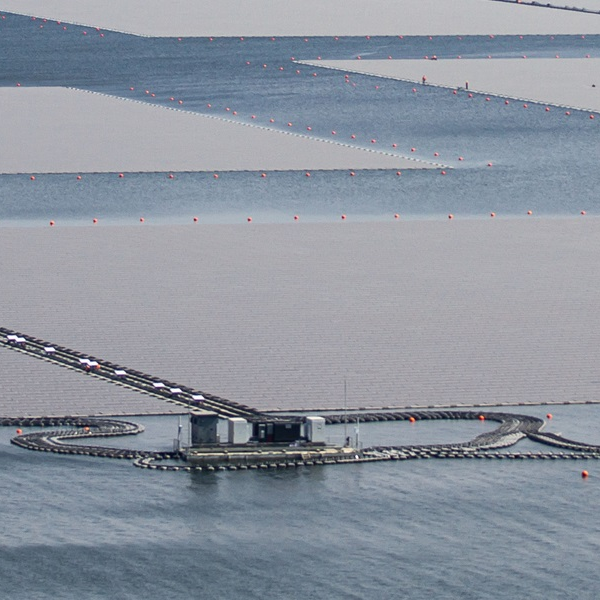Indonesia embraces the power of floating solar

Indonesia embraces the power of floating solar
The Cirata floating solar park in Indonesia is the largest of its kind in Southeast Asia. It is the first in a series of parks, all of similar scale, for which Witteveen+Bos is providing civil engineering services from its office in Jakarta.
The Cirata solar park, which floats on the Cirata reservoir in West Java, currently houses 340,000 solar panels that together produce 192 megawatts of green electricity. That is enough for 50,000 households. The park occupies 250 hectares, equal to 350 football fields, of the 6,200 hectares available in the reservoir. A project to expand the park’s capacity to 500 megawatts has now been initiated.
Together with private developers, the national power company in Indonesia, PLN Nusantara Power, is working on utilising solar power to generate green electricity. Solar power is widely available in Indonesia and can help PLN Nusantara Power make the national grid more sustainable. Indonesia aims to achieve zero greenhouse gas emissions by 2060.
Limited claim on space
Energy generated by floating solar parks has several advantages. When combined with hydropower, solar energy ensures a continuous supply of green electricity, which greatly reduces peak grid loads. Also, floating solar parks do not occupy the physical space that land-based parks do, which is a major advantage on the very densely populated island of Java. Increased solar energy also means that less energy is required from the grid’s chief source: coal-fired power plants.
Reservoirs such as Cirata were originally built so that hydroelectric power plants could generate electricity for water supply and flood prevention. The reservoirs were initially filled with fresh water and are naturally supplied by rainwater. Harnessing solar power for the electricity grid means that hydropower is only needed after sunset or on cloudy days. This reduces water consumption and allows longer use of the water supply to be made during the annual dry season.

Reduced dependency
Four large coal-fired power plants are currently in operation around Jakarta. This form of energy generation produces greenhouse gases and other emissions that harm the environment. Its negative impact on the air quality and thus the people and environment in and around Jakarta is immediately noticeable. An increase in floating solar parks will mean a reduced dependency on coal-fired power plants and improved air quality.
Wave and wind force analyses
Witteveen+Bos is involved in the expansion of the Cirata floating solar park and is also working on similar projects elsewhere in Indonesia and in Malaysia. Our contribution includes a range of site studies for which we are utilising various areas of expertise.
These areas of expertise include bathymetry, topography, hydrology, hydraulics, construction engineering, geology, geotechnical engineering, and civil engineering. They are being utilised for, for example, the engineering behind the floating installation’s anchoring, a flood analysis for the onshore locations of substations, and wave and wind force analyses.
Floating solar panels



More information?
